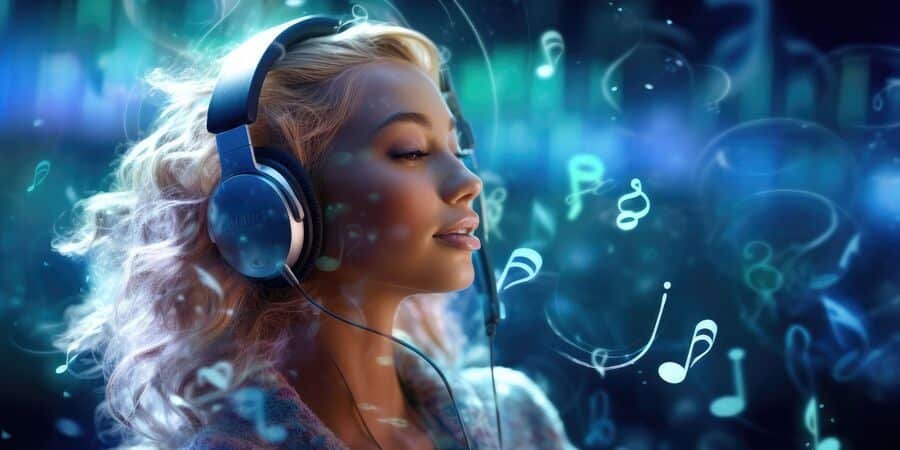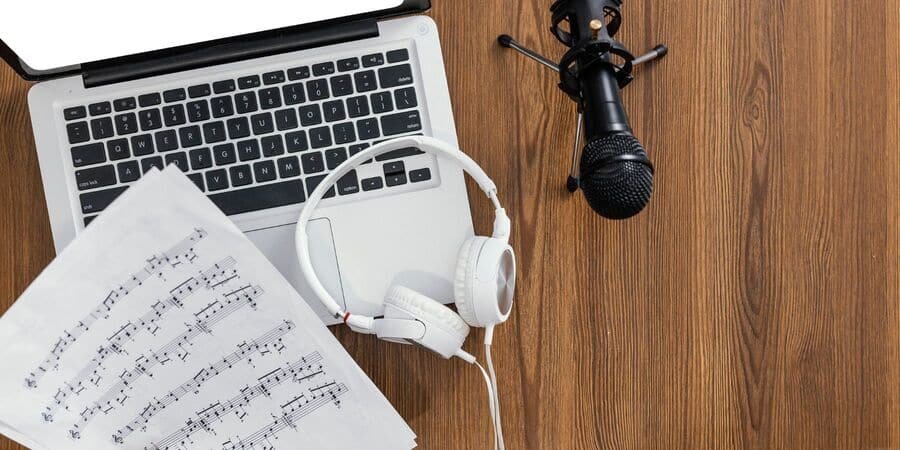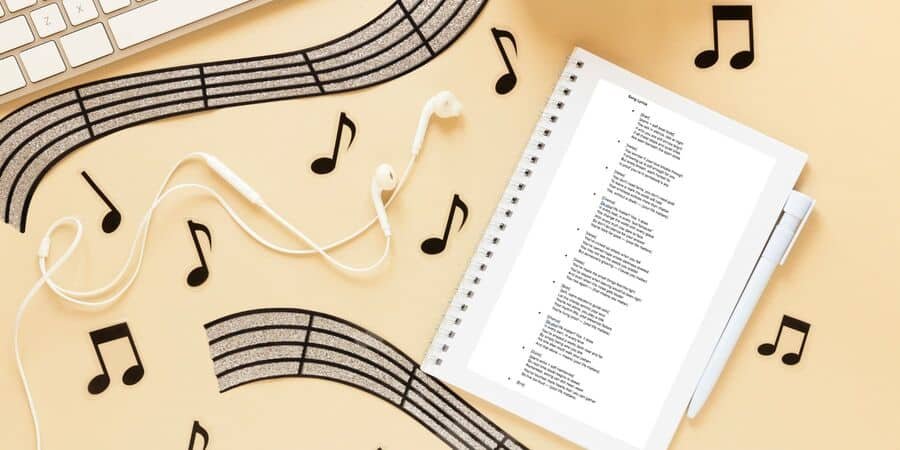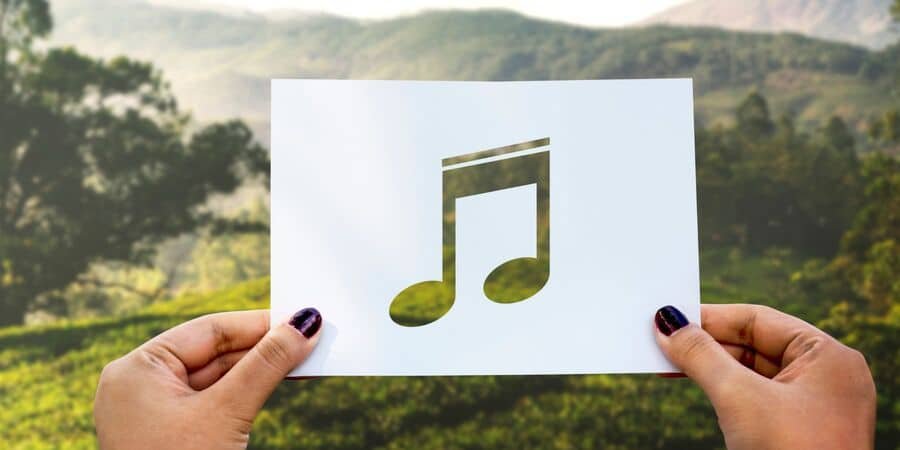How to Create Engaging AI-Generated Song Lyrics – Step by Step

Introduction
Artificial Intelligence has opened up a new world for songwriters, allowing anyone, from professionals to beginners, to turn emotions and stories into beautiful lyrics. But while AI can generate words, authentic emotion still comes from you.
Table of Contents
ToggleIn this guide, you’ll learn how to create heartfelt, engaging AI-generated lyrics that connect deeply with your audience, without losing your personal voice.
Before we dive in, you may want to read 5 Creative Ways to Use Generative AI Without Losing Authenticity to understand how to balance creativity and technology in your art.
1. Define the Emotion Behind Your Song

1.1. Ask Yourself the “Why”
Every song begins with a feeling, joy, sorrow, hope, or love.
Ask yourself:
Why do I want to write this song?
What emotion should it bring to the listener?
Who is it meant for?
Once you can answer those questions clearly, your AI tool will have a much stronger foundation for generating emotionally aligned lyrics.
1.2. Example: A Personal Story
Imagine you’re writing a song for a new grandchild. The AI will capture your love and awe only if you clearly express it in your prompt:
“Write warm, acoustic-style lyrics for a grandmother celebrating her first granddaughter, using themes of love, new life, and gratitude.”
You can hear how this concept becomes real in the personalized songs from AI Grow.
2. Craft a Powerful AI Prompt

2.1. Why the Prompt Is Everything
AI tools don’t “know” emotion, they mirror what you tell them. The more detailed and emotionally specific your prompt, the more authentic your lyrics will be.
Example of a strong prompt:
“Create emotional pop lyrics about long-distance love. Use simple but poetic language, a hopeful tone, and a repeating chorus about believing in reunion.”
2.2. Elements of a Great Prompt
Theme: What is your song about? (e.g., love, freedom, loss)
Tone: Joyful, nostalgic, romantic, reflective
Perspective: I / You / We
Genre: Pop, ballad, folk, R&B, etc.
Audience: For a friend, partner, parent, etc.
A good prompt = a great first draft.
3. Structure Your Lyrics Like a Story

3.1. The Classic Song Format
Here’s a simple and effective structure most hit songs use:
Verse 1: Introduce the situation or feeling
Chorus: Highlight the emotional core – what’s the “message”?
Verse 2: Add contrast or development
Bridge: A turning point or deeper reflection
Final Chorus: Bring it all together with passion
3.2. Keep the Flow Natural
If a line feels too robotic or off-rhythm, rephrase it like you would actually speak. Sing it aloud, if it doesn’t sound right, tweak it.
4. Edit With Your Heart

4.1. Add Human Imperfection
AI lyrics can sound too “perfect”, but real art lives in imperfection.
Replace generic lines with personal memories or words you actually use in daily life.
Example:
AI might write: “You’re the light that guides me home.”
You could change it to: “Your laugh still guides me home.”
One small detail turns a cliché into a memory.
4.2. Mix AI Versions
If you generate several AI drafts, combine the best lines from each. It’s like working with multiple co-writers, except you’re the one with the final say.
5. Add Melody and Rhythm

5.1. Basic Melody Framework
Try this progression to start shaping your song’s sound:
C – G – Am – F
It works beautifully for pop and emotional ballads.
You can hum over it, or use AI melody generators like Suno.ai, Udio, or Soundful to explore different moods.
5.2. Adjust to Fit Your Voice
If the AI gives too complex melodies, simplify them. The goal is connection, not perfection.
Remember, your natural singing flow makes the lyrics believable.
6. Keep It Authentic and Transparent

6.1. Why Authenticity Matters
Your listeners can feel when something comes from a real place.
Avoid copying AI results word-for-word, shape them into something that represents you.
6.2. Be Honest About AI Use
In our article Ethics & Transparency: Should You Tell When Something Is AI-Generated?, we explore why honesty builds trust with your audience and improves SEO.
If your song was created with AI, mention it proudly, it shows you’re innovative, not deceptive.
7. Share and Inspire

7.1. Publish Your Lyrics
Once you’re happy with the final version, share it:
On your blog or social media
As a digital gift
Or as a personalized song for a loved one
You can transform your lyrics into a real song with music, vocals, and production through AI Grow’s Custom Song Service.
7.2. Build Your Creative Confidence
Each AI-assisted creation helps you grow. Over time, you’ll develop a sense for prompts, emotion, and rhythm that’s uniquely yours, your signature AI voice.
8. Step-by-Step Summary
Define your song’s emotion
Write a clear, emotionally detailed prompt
Choose your structure (Verse, Chorus, Bridge)
Refine and humanize your lyrics
Add melody ideas
Keep transparency and authenticity
Publish and share your work
FAQ – AI Songwriting
-
1. Can AI really write emotional lyrics?
Yes. When you give AI specific emotions and context, it can produce surprisingly moving results, especially when you refine them personally.
-
2. Which AI tools are best for songwriting?
Try ChatGPT, Suno.ai, and Udio together, text + melody = magic.
-
3. Can I sell AI-generated songs?
Yes, but always check licensing terms on each platform you use.
-
4. How do I make AI lyrics sound human?
Add personal details: names, memories, or phrases that are meaningful to you.
-
5. How do I improve the rhythm of AI lyrics?
Sing them aloud. Adjust syllables and pacing to fit your natural speech pattern.
Related Articles
If you enjoyed this guide, you might also like:
📩 Want to Learn AI from Scratch? Start Here.
Sign up to get free tips, beginner-friendly tools, and a downloadable ebook to help you start using AI — even with zero experience.
When you subscribe, you’ll get:
-
✅ A free ebook: “3 Ways to Start Using AI to Make Money”
-
✅ My best tips for beginners (no jargon, no hype)
-
✅ Updates when I release new tools, templates, or lessons


